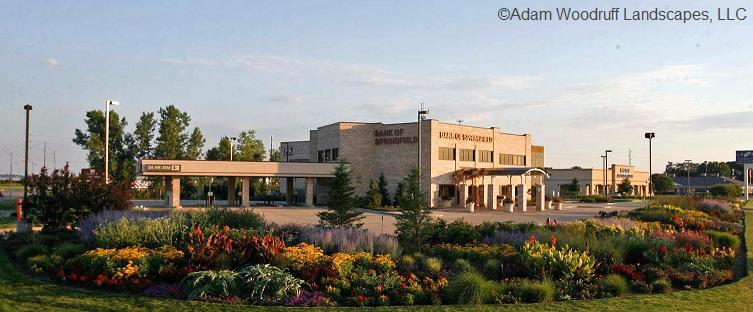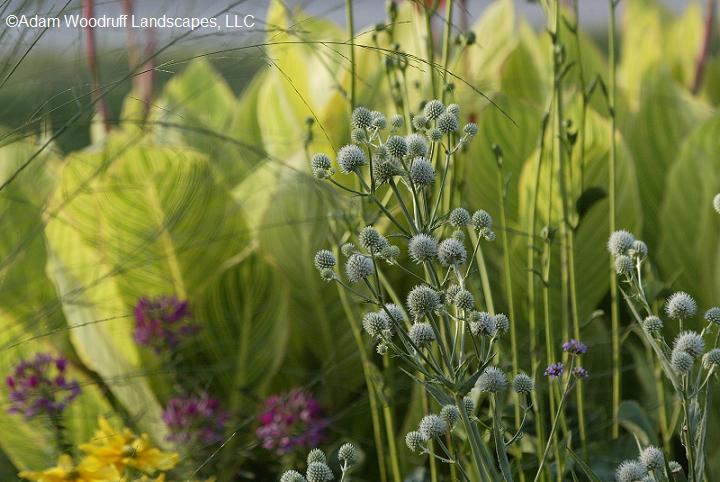In working on a follow-up post to A Garden You Can Bank On, I’ve been reviewing photos of the gardens from the past several seasons looking for successful plant groupings. There has been a particular evolution in the gardens between 2006 and 2008, and in me as a designer.
Garden design is a process of trial and error which results in refinement of the garden over time, so it’s not surprising that the gardens at BOS are vastly different now than when they were first planted. Today, more complex plant groupings are favored to the large panels of single cultivars from seasons past.

Datura innoxia (foreground), Salvia farinacea ‘Evolution’, and Pennisetum setaceum ‘Red Riding Hood’
As a designer I have become more comfortable taking risks. Bold tropical foliage punctuates a sea of annual color, ornamental grasses, perennials, and natives. Each vignette of plants supports the one adjacent to it while working collectively to support a grander visual statement. I recommend risk-taking. The beauty of gardening lies in the opportunity for change next season.
Often I am asked about my design process and sources of inspiration. I am embarrassed to say! My design process is not formulaic, a certain percentage of foliage to flowers. I map out structural elements on a base plan, review site photos, and ruminate. Typically the best ideas come to me as I lie in bed at night with my eyes closed, visualizing the site.
My inspiration comes from a variety of sources. Travel is one, particularly my route on the interstate between St. Louis, Missouri, and Springfield, Illinois. The roadside is peppered with natural areas and prairie plants. Observing nature always leads me to creative solutions. Trips abroad like the one we took last winter to Singapore and Malaysia inspired the use of lush tropical foliage in the gardens.
I also find inspiration at public gardens in my area. Missouri Botanical Garden, as well as the Lurie Garden at Millennium Park, the gardens at Ball Seed, and the Chicago Botanic Garden are valuable resources.
Books and magazines are also invaluable for inspiration. I keep a pretty extensive garden library including works by (some of my favorites) Noel Kingsbury, Piet Oudolf, Ken Druse, Nancy Ondra, and James van Sweden. Subscriptions to Fine Gardening, Garden Design, House & Garden, Gardens Illustrated, and several trade publications keep me current.
As I design a garden, I place structural plants on the base plan and build outward, selecting new plants based on their compatibility with the adjacent plant or plants. Experience has taught me which plants work well with one another. But if I need to double-check the visual compatibility of specific plants, or possibly seek out ideas for new combinations, I find that the web sites of garden photographers are invaluable. There are several with helpful search features, including www.clivenichols.com, www.gapphotos.com, and www.saxonholt.com.
[Thanks to all of you who welcomed me with comments on my very first post. It may take me a day or two to respond to any you leave on this one, but I promise I will get to them!]


